Over the past week, 10-Year Treasury rates increased by 3 bp, bringing the net change over the past two weeks to 10 bp.
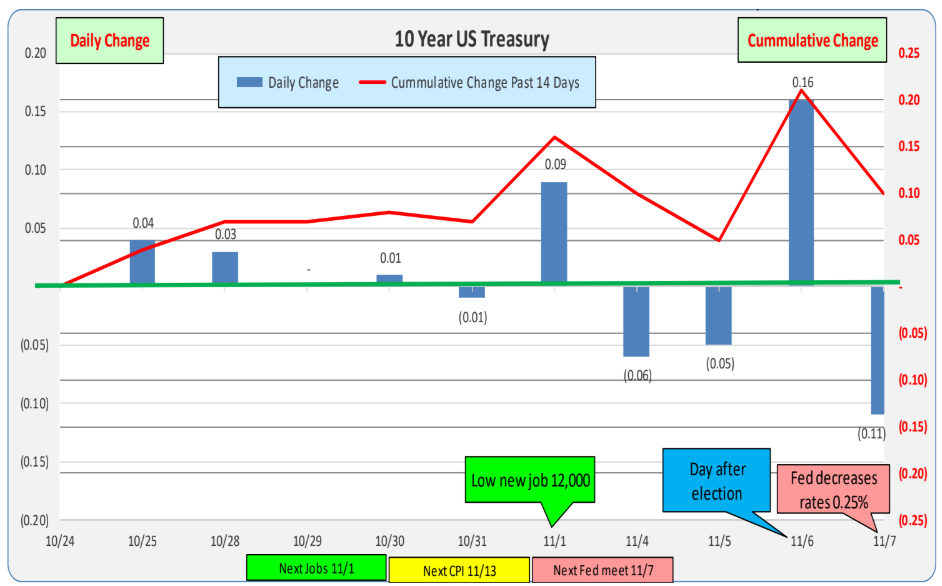
The red line represents current rates, while the green line shows rates from one week ago. Short-term rates are down, and longer-term rates have increased slightly.
For terms of 5+ years, the yield curve is now showing a positive shape. As the Fed decreases its Fed funds rate, short-term rates will decline, and the yield curve will return to a normal positive slope.
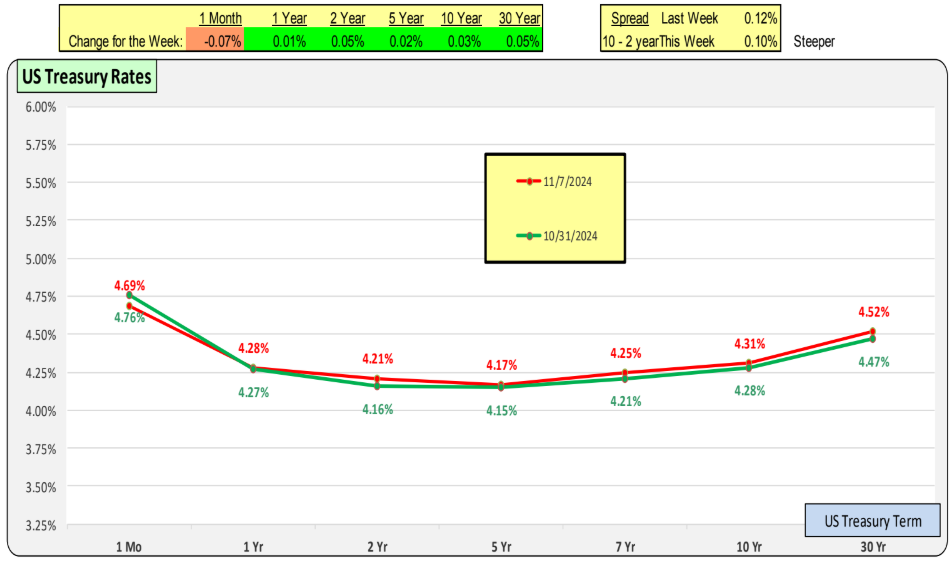
The Fed started to decrease rates on September 18, 2024. Short-term rates are decreasing in response.
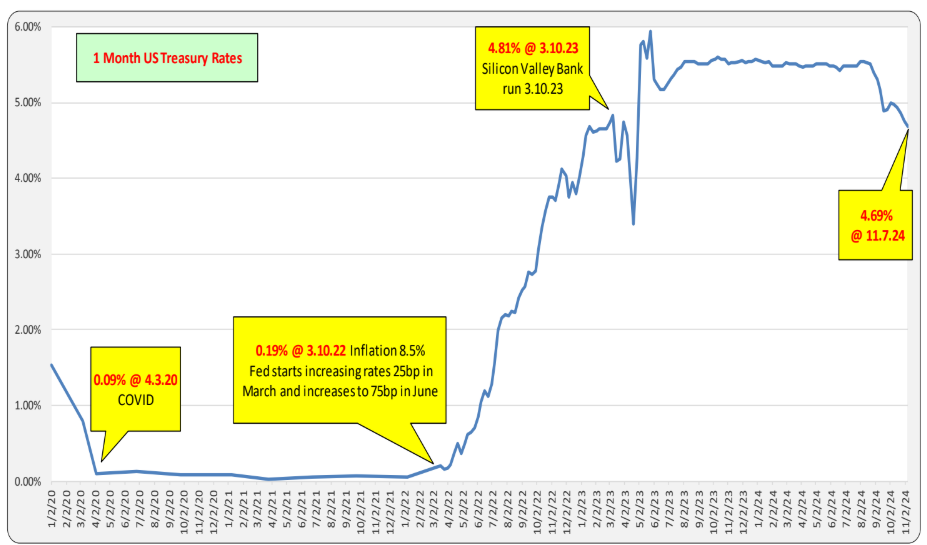
One year ago, mortgage rates peaked at 7.76% and are currently at 6.79%.
Over the past year, the Fed began reducing rates on September 18. Short-term rates decreased by 80 bp, while the 10-year Treasury fell by 35 bp, which has helped make the yield curve less inverted.
The spread between mortgage rates and the 10-year Treasury decreased by 65 bp, meaning there is less of a cushion, but it remains above the historical spread of 168 bp.

Between November 2023 and January 2024, long-term rates significantly decreased in anticipation of the Fed reducing rates sometime in 2024. This helped relieve pressure on bond portfolio valuations. Mortgage rates declined by 110 bp, and mortgage rates began the year at 6.62%, which is lower than the current 6.79%.
Ironically, despite little change in short-term rates and a large decrease in long-term rates, the yield curve’s inversion actually increased. This is contrary to expectations that the inversion would reverse as the Fed reduced interest rates. The Fed began reducing rates in September 2024.
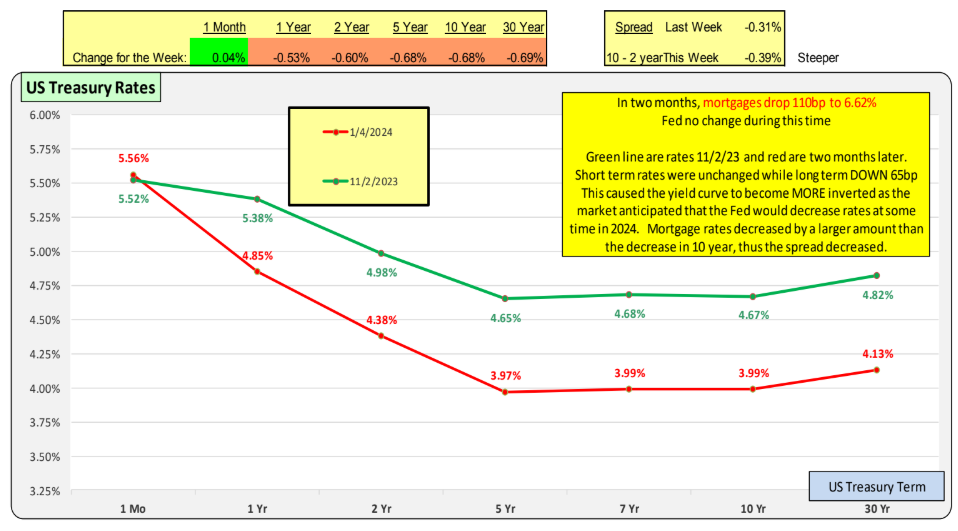
Between November 2023 and January 2024, both short-term and, more importantly, long-term rates decreased by a larger amount. Longer-term rates fell 30 bp below their current level. Since the beginning of the year, short-term rates have decreased, while long-term rates have increased. As a result, the yield curve’s inversion has materially decreased and is now nearly flat.
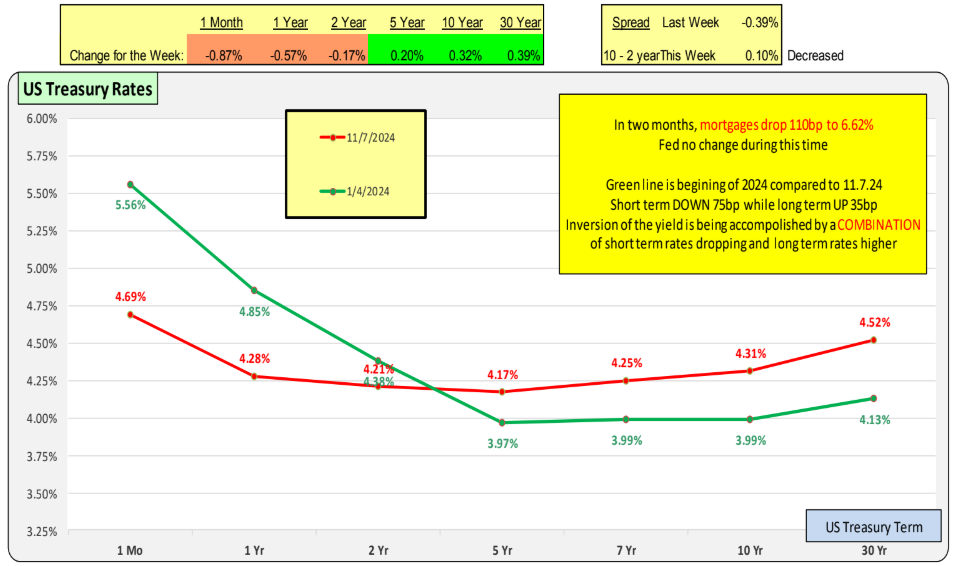
Bill Knudson, Research Analyst LANDCO NEXA
